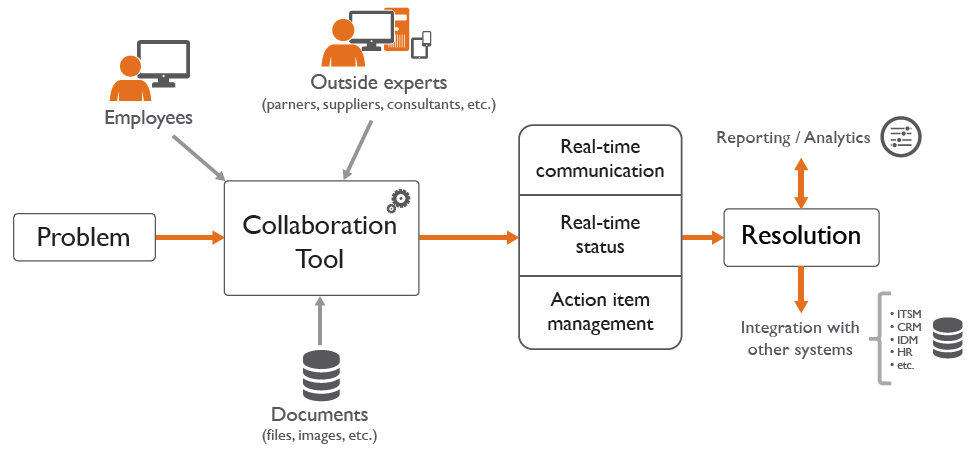What’s New at Kinetic: Building Smart in 2026
At Kinetic, we believe the future of Business Process Management isn’t bigger—it’s smarter.
How can organizations solve complex enterprise problems as quickly as possible? Timeliness is essential to minimize lost revenue and productivity, and in some cases even damage to the corporate brand...

How can organizations solve complex enterprise problems as quickly as possible? Timeliness is essential to minimize lost revenue and productivity, and in some cases even damage to the corporate brand image.
Resolving urgent, multi-vendor, mission-critical types of problems requires collaboration. But coordinating the input and effort of employees—along with, in some situations, partners, suppliers, consultants or others outside the organization—who work remotely, are traveling, or are based in other cities (or countries) is challenging.
While there are a range of online collaboration tools (for functions like project management, voice/Web conferencing, and file sharing) on the market, most aren’t designed for in-the-moment, team-based problem solving. Nor are they focused on the most critical type of problem management from a business value perspective: restoring a service or operation as quickly as possible.
For critical business services in large organizations, every minute of downtime equates to lost productivity, which can be measured in real financial terms. When orders can’t be processed, products can’t be shipped, employees can”t answer phone calls or emails, a production line shuts down, or any other situation where people are unable to do their jobs due to a technology issue—the business loses money. For example, Gartner has calculated that the average cost of network downtime across industries is $5,600 per minute.
Large enterprise problems can take many forms, including customer issues (e.g., a shipment fails to arrive on time); a public relations or social media crisis; business impacts from natural disasters; and information security breaches. But a not uncommon (and expensive if not fixed quickly) category is key enterprise systems going down, such as ERP, ITSM, supply chain, factory control, or email.
When such a system stops functioning, rapid problem resolution and system restoration is vital to minimize the expense, disruption, and interruption of vital operational processes. Identifying the source of the problem, correcting, and restoring service often involves communication and coordination of efforts between IT, business function or unit managers, and external consultants or vendors.
Online project management tools are generally designed for administering long-term endeavors. Solving large, urgent enterprise problems requires a different type of tool, one designed to enable teams to quickly formulate and execute action plans. Such a “virtual war room” tool should:
Ideally, the tool should also be easy to implement, and even more importantly, intuitive to use: there’s no time to train anyone on use of the software when the enterprise is in a crisis situation or dealing with a mission-critical system outage.
Implementing a virtual war room tool enables organizations to make better, faster decisions in difficult circumstances; restore vital services or resolve other significant problems more quickly; and minimize the costs of lost productivity, revenue, or opportunities. Try our platform for free to test out our virtual war room feature.

At Kinetic, we believe the future of Business Process Management isn’t bigger—it’s smarter.

IT support automation uses software workflows, rule engines, AI/ML, and integrations to automate...

Business process reimagined is the strategic renewal of how work gets done by combining modern digital...